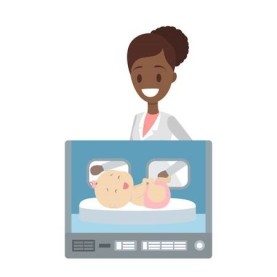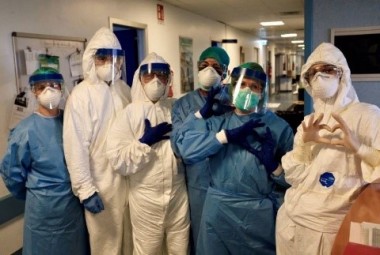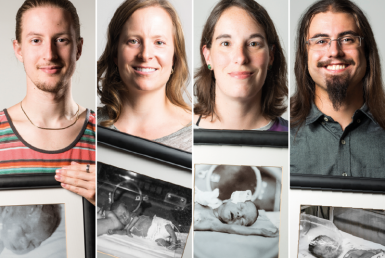

Chad, officially known as the Republic of Chad is a landlocked country in north–central Africa. It is bordered by Libya to the north, Sudan to the east, the Central African Republic to the south, Cameroon to the south-west, Nigeria to the southwest (at Lake Chad), and Niger to the west.
Chad has several regions: a desert zone in the north, an arid Sahelian belt in the centre and a more fertile Sudanian Savanna zone in the south. Lake Chad, after which the country is named, is the largest wetland in Chad and the second-largest in Africa. The capital N’Djamena is the largest city. Chad’s official languages are Arabic and French. Chad is home to over 200 different ethnic and linguistic groups. While many political parties are active, power lies firmly in the hands of President Déby and his political party, the Patriotic Salvation Movement. Chad remains plagued by political violence and recurrent attempted coups d’état. Chad is one of the poorest and most corrupt countries in the world; most inhabitants live in poverty as subsistence herders and farmers. Since 2003 crude oil has become the country’s primary source of export earnings, superseding the traditional cotton industry. Chad has a poor human rights record, with frequent abuses such as arbitrary imprisonment, extrajudicial killings, and limits on civil liberties by both security forces and armed militias.
Healthcare
In 1987 Chad had 4 hospitals, 44 smaller health centers, 1 UNICEF clinic, and 239 other clinics—half under religious auspices. Many regional hospitals were damaged or destroyed in fighting, and health services barely existed in 1987. Public health care expenditures were estimated at 2.9% of GDP. As of 2004, it was estimated that there were fewer than 3 physicians, 15 nurses, and 2 midwives per 100,000 people.
Source: https://en.wikipedia.org/wiki/Health_in_Chad
Preterm Birth Rates – Chad
Rank: 35 –Rate: 13.1% Estimated # of preterm births per 100 live births (USA – 12 %)
Source: https://www.marchofdimes.org/mission/global-preterm.aspx
COMMUNITY
Connecting with Chad from an informational standpoint has been challenging, especially in relationship to healthcare, and specifically preterm birth. The emotional connection we feel for the people living in Chad is one of great love, concern, hope and admiration for the resilience of our global family living in Chad.

From 1969 to 1988, 25,000 infants were born early each year as a result of hot weather, and with global warming pushing temperatures higher, more babies will be at risk for early birth.
Hot weather increases pregnant women’s risk of giving birth early, and more babies could be born early as a result of global warming, researchers report today (December 2) in Nature Climate Change. The average reduction in gestational length is six days, they find.
“Increased exposure to hot weather with climate change is likely to harm infant health,” write coauthors Alan Barreca, an economist at the University of California, Los Angeles, and Jessamyn Schaller, an economist at Claremont McKenna College, in the study. That’s because early birth is tied to poorer physical and mental health later in life.
Reviewing county birth rates around the time of extreme heat waves in the United States from 1969 to 1988, the researchers estimated that roughly 25,000 infants per year were born earlier than their due dates as a result of heat exposure, and that the heat led to the loss of 150,000 gestational days each year. Using data from climate models for the end of this century, they calculate pregnant women in the US will lose around 253,000 gestational days per year, with an additional 42,000 early births annually.
“More study needs to be done,” Mitchell Kramer, the chair of obstetrics and gynecology at Northwell Health’s Huntington Hospital in New York who was not involved in the study, tells HealthDay, “but certainly we must help protect pregnant women from extremes of heat as well as work on the causes of climate change.”
What causes pregnant mothers to have their babies earlier in hotter weather isn’t clear, but scientists have suggested heat leads to cardiovascular stress, which can induce pregnancy, or heat increases the levels of oxytocin, a hormone plays a role in labor, Time reports.
“There may even be a third cause,” Barreca tells Time, “which is loss of sleep. Minimum temperature on a hot day occurs at night, but it can still be hot enough to disrupt sleep, and that might be an important avenue to early birth.”
Income and exposure to heat make a difference, the team notes. For instance, access to air conditioning, typically associated with higher income, cut early birth risk. And, expecting mothers in regions of the US where temperatures are typically high didn’t have as many early births as women who live where temperatures are cooler.
“Electrification and access to air conditioning should be a part of any effort to protect pregnant women and infants in developing countries,” Barreca tells The Guardian. “But developed countries, like the US or England, should be paying developing countries to electrify with renewable sources, like wind or solar, so we avoid producing more greenhouse gas emissions.”
Ashley Yeager is an associate editor at The Scientist. Email her at ayeager@the-scientist.com.
 Maintaining Safety and Service Provision in Human Milk Banking: a call to action in response to the Covid-19 pandemic.
Maintaining Safety and Service Provision in Human Milk Banking: a call to action in response to the Covid-19 pandemic.
When a mother’s own milk is not available, WHO recommends pasteurised donor human milk as the first alternative.
Human milk banks screen and recruit donors, and have wide-ranging precautions to ensure the safety of donor milk. Screened donor milk principally feeds babies of very low birthweight, protecting them from a range of complications, as well as babies with congenital anomalies or neurological conditions.
The benefits of a human milk diet highlight the importance of providing these infants with donor milk for short periods—with appropriate use in the context of optimal support for lactation, such provision can support mothers to establish their milk supply without the need for supplementation with infant formula milk.
The coronavirus disease 2019 (COVID-19) pandemic is presenting many challenges to human milk banks worldwide and highlights a range of vulnerabilities in service provision and emergency preparedness. For the first time, the global human milk bank community is coming together to share learnings, collaborate, and plan. A Virtual Communication Network of milk bank leaders started to form on March 17, 2020, and now has more than 80 members from 34 countries. Data collated from regional and country leads in the Virtual Communication Network show that more than 800 000 infants are estimated to receive donor milk worldwide annually. However, the inadequate quality of the data is a major flaw, and the true global scale of milk banking is unknown.
The group actively discusses COVID-19-specific challenges and has developed mitigation strategies to ensure donor milk safety and service continuation, which will shortly be made available as a publication. During this crucial COVID-19 response period, human milk banks are facing the logistical challenges of adequate staffing, difficulties in donor recruitment, questions around the safe handling and transportation of donor milk, and increased demand as a result of mothers and infants being separated.
The global nature of this network supports breastfeeding advice from WHO, which is appropriate in both low-income and high-income nations.
Human milk bank leaders who have lived and worked through the HIV pandemic have brought insights into the mistakes that occurred in the 1980s, with fear leading to breastfeeding cessation and costing the lives of many babies who received infant formula in unsafe conditions.
Unlike HIV, where transmission via breastfeeding was a source of infection, there is no evidence around severe acute respiratory syndrome coronavirus 2 (SARS-CoV-2) transmission from breastfeeding or human milk, and the virus is inactivated by heat treatment.
Similar patterns have emerged during other viral outbreaks (eg, Zika in 2016), where uncertainty about donor milk use meant that milk was withheld, and then used again once pasteurisation was proven to be effective or the virus shown not to be transmissible through milk. In the meantime, vulnerable infants have received suboptimal care. This constraint does not affect similar services (eg, blood transfusion and organ transplantation) to the same extent, where oversight and rapid research are prioritised.
To avoid further straining the health system during the COVID-19 pandemic, the best chance to keep infants healthy is to promote breastfeeding and a human milk diet. WHO notes that where donor milk provision can play a part, human milk bank services should be supported. The consensus from this Virtual Communication Network is that a comprehensive approach should be implemented to maintain contact between mothers and babies, with skin-to-skin contact and breastfeeding support. If donor milk is provided during any separation linked to COVID-19, this should be for as short a time as possible as a bridge to receiving mother’s own milk. By reducing the amount of mother–infant separation time and supporting the use of mother’s own milk, the excess demand for donor milk will diminish, ensuring that the global supply can continue to be used for those who need donor milk most, when maternal breastfeeding is disrupted or not possible. This approach increases the chances that these infants will leave the neonatal intensive care unit breastfeeding exclusively, which is essential for the long-term health of mother and baby. Emphasis on the importance of human milk for infants within neonatal units creates an environment where the mother’s own milk is seen as the valuable lifesaving resource that it is.
It is imperative that human milk bank systems are not inadvertently affected by efforts to contain COVID-19, but milk banks are facing unprecedented challenges to maintain safe supplies in volatile health system infrastructures. Local issues have been deepened by the absence of globally agreed operational safety guidelines, no global mechanism for rapid communication among milk banks, with little data and infrastructure to ensure responsiveness during a crisis. The strengthening of human milk bank systems is required to ensure that safe provision of donor milk remains an essential component of early and essential newborn care during routine care or emergency scenarios, such as natural disasters and pandemics.
We therefore collectively call on global policy leaders and funding agencies to recognise and prioritise the need to address four high-impact areas: (1) ensuring neonatal nutrition is an essential focus during emergencies; (2) funding research to optimise human milk bank systems in response to new infectious threats; (3) investing in innovation across all aspects of milk banking processes to improve the responsivity, access, and quality of donor milk provision; and (4) supporting the integration of learnings and innovations by the global milk bank community during COVID-19 into newborn, nutrition, and emergency response planning for future emergencies.
The Virtual Communication Network is now focused on building a formal global alliance to enable enhanced communication, sharing of data, and maintenance of optimal practices. Human milk banks constitute a necessary but chronically under-resourced service that deserves better protection against this and future emergencies.
NS reports funding from UK Research and Innovation, as a Future Leaders Fellow at Imperial College London; and is a cofounder and trustee of the Human Milk Foundation. All other authors declare no competing interests.
Source:https://www.thelancet.com/journals/lanchi/article/PIIS2352-4642(20)30134-6/fulltext

Premature births have gone down during the pandemic — and doctors are baffled as to why
Amid the pandemic, premature births have dropped precipitously around the world. A few scientists have theories. Matthew Rozsa July 21, 2020 11:58PM (UTC)
Medical experts are baffled as to why that has there has been a surprising drop in the number of premature babies born during the coronavirus pandemic, as first reported by The New York Times.
At University Maternity Hospital Limerick in Ireland, a neonatologist named Dr. Roy Phillip began investigating the matter when he learned that the hospital had not ordered any of the breast milk-based fortifier that doctors feed to the tiniest premature babies, as the Times story recounts. After being told that no babies had been born who required it, Dr. Phillip and his team compared the birth weights of babies (which tends to correlate to whether a baby is premature) born in their hospital between January and April of 2001 all the way through that same period in 2020.
They found that the number of babies born under 3.3 pounds had been reduced by 75%, while none at all had been born under 2.2 pounds. Even after the Irish lockdown began to end in June, the numbers continued to stay at unprecedented lows, according to Dr. Phillip.
At the same time that Ireland was discovering its own reduced number of preemies, medical professionals in other countries were finding the same thing. A neonatologist named Dr. Stephen Patrick at Vanderbilt Children’s Hospital in Nashville discovered that roughly 20 percent fewer NICU [neonatal intensive care unit] babies were born at his hospital in March than usual. A neonatologist at the University of Calgary in Alberta, Dr. Belal Alshaikh, learned that premature births across the province dropped by nearly half during his country’s lockdown.
At the Statens Serum Institut in Copenhagen, Dr. Michael Christiansen learned that the rate of babies being born before 28 weeks had dropped by 90 percent from March 12 to April 14 in 2020 (during the main lockdown period in Denmark) compared to the rates over the previous five years. Doctors in Australia and the Netherlands made similar discoveries of their own.
According to the Times article, potential explanations for the drop in premature births tend to involve the consequences of women staying at home, including the increase in physical rest, reduced exposure to infectious diseases and reduced exposure to air pollution.
“I saw this as well. I, too, was intrigued,” Mark Mercurio, a professor of neonatology at Yale University told Salon by email. “Our NICU has been as busy as ever, and I don’t personally have the specific numbers at hand from the most recent months to tell you whether our premature birth rate, especially the very preterm ones, is down. I have contacted those who keep those stats.”
It is worth noting that the two papers discussing this phenomenon have been posted on the preprint server medRxiv but have not yet been peer reviewed. Speaking to the Australian Financial Review, Professor of Obstetrics at the University of Western Australia John Newnham said that “it would extraordinary if the described reduction had occurred. Such a quantum leap would be a major advance and may have been discovered by accident.”
He added, “But these results need to be replicated because very early preterm births have been stable over the last decades. The first explanation to be excluded is whether pregnant women have gone to a closer hospital because of the lockdown.”
The seeming drop in premature baby births is only one of the medical mysteries that has emerged from the coronavirus pandemic. There are questions about why people respond so differently to being infected with the virus, the correlation between being asymptomatic and health issues arising from the virus, where the virus originated, how much of the virus can make you sick, how long one can remain immune after infection and the role played by children in spreading it.

PREEMIE FAMILY PARTNERS

Effective Communication in the NICU
Britt Days, MSN,RN details strategies for effective communication with families & team members in the NICU.

Visual‐motor functions are affected in young adults who were born premature and screened for retinopathy of prematurity
Dýrleif Pétursdóttir https://orcid.org/0000-0002-9757-1373
Institution of Neuroscience/Ophthalmology, Uppsala University, Uppsala, Sweden
Abstract
Aim
To assess visual‐motor integration in young adults previously included in a prospective study on the incidence of retinopathy of prematurity (ROP).
Methods
The study encompassed 59 preterm individuals, born 1988‐1990, with a birth weight ≤1500 g, and 44 full‐term controls, aged 25‐29 years. Ophthalmological examination, including visual acuity and contrast sensitivity, and the Beery Visual‐Motor Integration (VMI) with supplemental tests of visual perception and motor coordination, were performed. A short questionnaire was filled in.
Results
The preterm individuals had significantly lower scores than the controls in all VMI tests, median values and interquartile ranges: Beery VMI 87 (21) vs 103 (11), visual perception 97 (15) vs 101 (8) and motor coordination 97 (21) vs 102 (15), respectively. Within the preterm group, no correlations were found between the VMI tests and ROP, gestational age, birth weight or visual acuity. Contrast sensitivity was correlated to visual perception. Neurological complication at 2.5 years was a risk factor for lower scores on Beery VMI. The preterm subjects reported six times as many health problems as compared to the controls.
Conclusion
Being born preterm seemed to have life‐long effects. This study shows that visual‐motor integration was affected in young adults born preterm.
Source: https://onlinelibrary.wiley.com/doi/10.1111/apa.15378

Signs of postpartum depression in dads are often mistaken or missed, study shows
By Manas Mishra Reuters Posted June 10, 2019
While many people can pick up on signs of postpartum depression in new mothers, the same signs are often mistaken for something else or missed entirely in fathers, a British study suggests.
There needs to be greater awareness that the mental health disorder can occur in either parent for up to a year after the birth of a child, researchers say.
In fact, a previously published research review found that one in four fathers experienced postpartum depression within three to six months after a child was born.
Study leader Viren Swami, a professor of social psychology at Anglia Ruskin University in Cambridge, UK, started researching the subject after he was diagnosed with the disorder after the birth of his son.
“Once I was diagnosed, I wanted to do more research into it and find out why so many people, like myself, think that men can’t get postnatal depression,” Swami told Reuters Health via phone.
Swami and his colleagues recruited 406 volunteers, ages 18 to 70, and had them read two vignettes describing almost identical situations where the subject suffered from postpartum depression, but one with a man and another with a woman.
Participants were initially asked if they believed anything was wrong with the subjects. Almost everyone — 97 percent — responded “yes” for the vignette with the woman, and 79.5 percent responded “yes” for the male.
Next, participants were asked what they thought was wrong. In the case of the mother, 90.1 percent correctly listed postpartum depression, postnatal depression or depression, while only 46.4 percent did so for the father.
Answers listing “baby blues” as the reason were scored as incorrect because this kind of short-lived mood swing is different from postnatal or postpartum depression and usually resolves within a week after birth, Swami and his team write in the Journal of Mental Health.
For the woman, a clear majority of 92.9 percent said depression was the problem.
Among those who did feel something was off with the man in the case study, 61 percent correctly thought it could be some form of depression. But 20.8 percent thought the father’s symptoms could be stress, 11 percent responded with tiredness and stress, and a few others said it could be anxiety, feeling neglected or “baby blues.”
The invisibility of their depression may force fathers to cope on their own instead of seeking professional help, the research team says.
One shortcoming of the study is that participants were recruited online, so they may not represent all adults, the researchers note
But some of the new results are encouraging, he said. “Although a much higher percentage of respondents recognized PND in women, there was still a substantial amount that recognized PND in father,” Eddy said via email.
“There are many fathers out there who suffer from PND who think they are alone and nobody sees their suffering. More people are beginning to recognize that paternal PND is real,” he added.
Previous research has shown that educational programs about maternal postnatal depression can improve awareness of the disease, the researchers wrote.
“Similarly rigorous programs to support new fathers and raise awareness of paternal postnatal depression are now urgently required,” they said.
Source:https://globalnews.ca/news/5375057/dads-postpartum-depression/

Male Postpartum Depression – Tips For New Dads To Overcome It | Dad University
02/14/2019 – Dad University
Putting out a “WAKE-UP” call to Family Partners, Healthcare Providers and Educators. Late pre-term birth babies (still preemies) have challenges both medically and developmentally. Each one is unique. Late preterm infants are considered an at-risk population. So often we hear preemie parents and families “blow off” the importance of awareness related to the ongoing research, findings, and recommendations regarding late term preemie health and wellness. If you are a healthcare provider, parent/caregiver or educator attending to a late term preemie infant/child, please stay informed and empowered in order to provide dynamic proactive care for these amazing preterm birth survivors!

Concerns About Preterm Birth Extend to the Last Few Weeks

THE CHECKUP – Infants born at 37 or 38 weeks were more likely to have developmental delays than full-term babies.
When I was training in pediatrics, back in the 1980s, we spent a lot of time working in the newborn intensive care unit, where relatively new — and rapidly evolving — technologies made it possible to save extremely premature infants. A full-term pregnancy lasts for 40 weeks, and we were often taking care of babies born at 27 or 28 weeks, and sometimes earlier, impossibly tiny infants who were clearly not ready to exist outside the womb.
We worried less about the bigger, more clearly mature babies who were just a month or a little more early; the chief question was whether they weighed enough to go home — otherwise they had to stay in the hospital to “feed and grow.” And there was a general sense that that was also what those last weeks in the womb were mostly about.
But the thinking has shifted as new research has shown that every week that a baby stays in the womb makes a difference in health and development, even those last few.
“They’re not done yet, they’re just not done yet,” said Dr. Wanda Barfield, the director of the division of reproductive health at the Centers for Disease Control and Prevention. In that excitement over being able to save the profoundly premature infants, medicine lost sight for a while of the fact that the infants born at 34 and 35 and 36 and 37 weeks gestation “weren’t just little term babies, weren’t mature, had a lot of needs to continue their physiological maturity,” she said.
This led, in some cases, to a rather cavalier attitude toward delivering babies early, even when not medically indicated. But when researchers looked more closely at these “late preterm” infants, they found that they were at increased risk of a whole range of medical problems and developmental issues.
One important result of the research on late preterm infants was that the American College of Obstetricians and Gynecologists recommended strongly against early deliveries, unless they were medically necessary. Between 2007 and 2014, Dr. Barfield said, late preterm births declined, but since 2014, there has been an uptick. “We’re losing ground,” Dr. Barfield said. And there are also concerning disparities with higher rates of prematurity among African-American and Hispanic women.
Dr. Prachi Shah, an associate professor of pediatrics at C.S. Mott Children’s Hospital at the University of Michigan, said, “when we think about the morbidities of preterm birth, most studies have focused on the very preterm infant, less than 32 weeks, less than 28 weeks.” However, she said, from a public health point of view, late preterm births — from 34 to 37 weeks — account for the majority of preterm births — about 70 percent — and for 7 percent of all live births.
The terminology was revised in a 2007 report by the American Academy of Pediatrics: Babies born from 34 to 36 6/7 weeks gestation were classified as “late preterm,” rather than “near term.” Those born from 37 to 38 6/7 weeks are now called “early term” babies, and only those who stay inside for 39 to 40 6/7 weeks are considered full term. Early term infants represent another 26 percent of all live births.
In pediatrics, late preterm infants are now considered an at-risk population. Most immediately, they are at higher risk of medical problems in the newborn period, including poor feeding, dehydration, jaundice and hyperbilirubinemia. They may have trouble maintaining their blood sugar levels, and they may have trouble maintaining their temperatures. They are more likely to be readmitted after they go home from the hospital.
When researchers control for underlying conditions associated with early deliveries, like maternal hypertension or diabetes, late preterm infants are still at higher risk than full-term infants whose mothers have those same problems.
As they grow, the late preterm children are also at increased risk for developmental problems, Dr. Shah said. “Beyond the perinatal period, at a population level, when compared to full-term infants, there is a higher incidence of learning difficulties and minor cognitive and neurologic issues.”
In a recent study, researchers looked at data from a group of almost 6,000 children in New York (the Upstate KIDS cohort, born outside New York City from 2008 to 2010) who were regularly assessed during the first three years of life through parental questionnaires. The researchers also looked to see whether children had been found eligible for early intervention services, which are provided to those with developmental delays.
Edwina Yeung, a senior investigator at the Eunice Kennedy Shriver National Institute of Child Health and Development division of intramural population health research, who was the senior author, said, “We were trying to look at this in a longitudinal way, as a continuum of gestational age.”
Although the most marked risks were found in children born at the lower gestational ages (32 weeks and below), the relationship was consistent: The longer babies stayed in the womb, the less likely they were to show developmental delays on the questionnaires, and to qualify for early intervention services. The late preterm infants were at higher risk than the early term infants, but those born at 37 and 38 weeks gestation were also at higher developmental risk, with a greater likelihood of failing the gross motor and communication domains of the questionnaire. Even 39 weeks was not as good as 40 or 41.
“Nobody doubts that preterm delivery is a problem,” Dr. Yeung said. “The question of interest is in that small window around 40 weeks with term deliveries and early term deliveries.”
Dr. Shah, who was not involved with this study, said, “The key take-home message is that every week seems to make a difference in terms of developmental delay — the earlier you were born, the higher your risk for developmental delay.”
Dr. Shah was the first author of a 2016 study which found that at preschool and kindergarten entry, children born in the late preterm period had lower math and reading scores than children born at term. “Compared to full-term infants, there is an increased risk of developmental vulnerability, but the magnitude of effect is not as great as those born very preterm,” she said.
Still, these are children who should be identified — and helped — before they get to school. “We have missed a window to intervene,” Dr. Shah said. “If we have evidence that there are population-based differences, we should be thinking about them as a vulnerable population that may need targeted surveillance.” It may be important to look closely at which late preterm infants should be monitored most closely, she said, and to consider extending the eligibility for services like early intervention.
In terms of development, Dr. Shah said, many of the risks for late preterm and early term infants seem to be around communication and language delays, and around math. “Every week of intrauterine life makes a difference in these neurodevelopmental processes,” Dr. Shah said. “Even a week early can seem to result in structural changes.”
Dr. Barfield was the co-author of a 2019 update on the late preterm infant from the American Academy of Pediatrics, which emphasizes the importance of strategies for preventing prematurity. The A.A.P. recommends against early discharge for these newborns, and suggests that they come back for follow-up visits after discharge.
They need to be breastfeeding well, and able to maintain their body temperatures. Their families need to be clear on the rules of safe sleep and fully informed about all the other warning signs to watch for, from jaundice to lethargy to breathing problems.
“We need to understand that these babies are premature,” Dr. Barfield said. “Although they may be closer in terms of time, they are still premature infants.”

NICU Nurse Adopts Baby She Felt ‘Instant Connection’ With
 Sep 16, 2019
Sep 16, 2019
Baby Jackson is the apple of his mom’s eye. The two share a special bond, and the way it came about is even more special. Claire Mills, 25, is a NICU nurse at a hospital in Houston, Texas. When Jackson was born five weeks premature at the same hospital, he quickly became more than Mills’ patient. So when his biological mother worried she couldn’t care for him in the way he deserved, she asked Mills if she would adopt him. She said yes and has been raising the sweet little boy ever since.

HEALTH CARE PARTNERS
Exposure to iodine in the NICU may affect infant thyroid function
HealthDay News – JULY 7, 2020
Exposure to iodine in the neonatal intensive care unit (NICU) may increase a baby’s risk for loss of thyroid function, a new study suggests.
Iodine solutions are often used as disinfectants on the skin before surgical or other medical procedures. Iodine also is given internally for imaging procedures used in infants, researchers explained.
Investigators found higher blood levels of iodine in babies with congenital hypothyroidism (partial or total loss of thyroid function) who had a stay in the NICU. All these infants had normal thyroid function when they went to the NICU.
“Limiting iodine exposure among this group of infants whenever possible may help lower the risk of losing thyroid function,” researcher Dr. James Mills said in a news release from the U.S. National Institutes of Health.
RELATED
Mills is from the epidemiology branch of the NIH’s Eunice Kennedy Shriver National Institute of Child Health and Human Development.
For babies with congenital hypothyroidism, treatment with thyroid hormone has to start within four weeks after birth or permanent intellectual disability can happen.
For the study, Mills and his colleagues compared iodine levels from more than 900 children with congenital hypothyroidism to more than 900 children who did not have the condition.
RELATED
Among the kids, 183 were cared for in the NICU. Of these, 114 had congenital hypothyroidism and 69 did not.
Children with congenital hypothyroidism were more likely to have been in a NICU than those without the condition, the researchers found.
When they looked at only kids who had been in the NICU, they found those with congenital hypothyroidism had higher iodine levels than those without the condition.
RELATED
Higher iodine levels among babies with congenital hypothyroidism and a NICU stay might be linked to exposure to iodine during treatment, although only an association was observed and the research didn’t include information on the infants’ exact medical procedures.
The researchers caution NICU staff not to use disinfectants containing iodine and to avoid exposing babies to iodine unless necessary. Preemie infants absorb iodine more readily through their skin than older infants, they noted.
The report was published July 7 in the Journal of Nutrition.

Telehealth helps Mayo Clinic neonatologists better treat newborns in emergencies
The new technology connects on the first attempt 96% of the time, compared with 73% for the previous telemedicine carts; with enhanced monitoring and support, tele-neonatology availability is 99%. By Bill Siwicki -November 06, 2019
The Mayo Clinic in Rochester, Minnesota, implemented tele-neonatology six years ago. Prior to that, Mayo Clinic neonatologists were assisting community hospital care teams via telephone when a newborn required advanced resuscitation or critical care.
THE PROBLEM
“Because we were unable to visually assess the newborn, this limited our ability to closely collaborate with the local team and guide care over the phone,” said Dr. Jennifer Fang, medical director, tele-neonatology, at Mayo Clinic. “This was especially relevant when our neonatal transport team was not present for a high-risk delivery due to weather or geography, and the local team had to resuscitate and stabilize the critically ill newborn independently.”
These challenges prompted Mayo Clinic to develop a tele-neonatology program that allows neonatologists to establish a real-time audio/video telemedicine connection with care teams in community hospitals during these high-risk, low-frequency neonatal emergencies.
The tele-neonatology program is now offered at 19 community hospitals with Level I (well-baby) or Level II (special care) nurseries located in Minnesota and Wisconsin. Mayo Clinic board-certified neonatologists have performed more than 425 tele-neonatology consultations.
“During the initial pilot program, local care teams and neonatologists identified that tele-neonatology was feasible and seemed to improve the quality and safety of care provided to newborns requiring advanced resuscitation,” Fang explained. “However, we also realized that the initial technologies used for our program did not provide the level of reliability and audio/video quality that our program required.”
PROPOSAL
Previously used telemedicine technologies for Mayo Clinic’s tele-neonatology program had issues with reliability, including ability to establish and maintain a connection for the duration of the tele-neonatology consultation.
For example, when using a consumer-grade wireless tablet with HIPAA-compliant video conferencing software, neonatologists were able to connect on the first attempt during only 70% of consults. Further, 15% of consults were interrupted by an unintended disconnection.
After the initial pilot phase, Mayo Clinic transitioned to a wired telemedicine cart with a hardware CODEC. While this technology improved the ability to connect on first attempt to 83% and reduced dropped connections to 6%, it still did not meet the reliability requirements for tele-neonatology given the emergent, critical nature of the consultations.
“In addition to suboptimal reliability, previous technologies were not meeting provider expectations for audio and video quality,” Fang reported. “When assessing satisfaction with audio/video quality on a 1 (poor) to 5 (excellent) scale, the wireless tablet had a mean rating of 3.3 and 3.2 for video and audio quality, respectively. After transitioning to the wired telemedicine cart, the video and audio quality ratings significantly improved to 4.6 and 4.3, respectively.”
However, users still reported issues with device size and difficulty positioning it in a constricted care environment, lack of mobility due to the wired connection, and audio delay and fragmentation.
“Because reliability and audio/video quality of the previous technologies did not meet our programmatic goals, the Mayo Clinic tele-neonatology program sought a telemedicine product that could provide 99% reliability in rapidly establishing and maintaining a connection, a more responsive remotely controlled camera, seamless high-fidelity audio, and a mobile form factor that fit well into the typical neonatal work space, for example, the labor and delivery room, nursery, and operating room,” Fang said.
MARKETPLACE
There are many vendors on the market today offering telemedicine technology, including American Well, Avizia, GlobalMed, InTouch Health, MDLive, Novotalk, SnapMD, Teladoc, TeleHealth Services and Tellus.
MEETING THE CHALLENGE
In October 2016, Mayo Clinic’s tele-neonatology program transitioned from a wired telemedicine cart with hardware CODEC to a proactively monitored, fully supported wireless telemedicine product from vendor InTouch Health.
Care teams in the community hospitals activate tele-neonatology when there is a high-risk delivery or a newborn that requires advanced resuscitation. Providers at the community hospital place the wireless telemedicine device at the newborn’s bedside and call Mayo’s Admission and Transfer Center to request a tele-neonatology consult.
A Mayo Clinic neonatologist then establishes a synchronous, audio/video connection with the care team via the telemedicine device in the room. If the newborn requires transfer to Mayo Clinic’s neonatal intensive care unit (NICU), the neonatologist can dispatch the transport team to retrieve the patient as part of the tele-neonatology workflow.
RESULTS
The objective of the Mayo Clinic tele-neonatology study (McCauley et al, Telemed and e-Health, 2019) was to compare the performance of two telemedicine technologies used to provide tele-neonatology consults.
“We hypothesized that the InTouch Health Lite Version 2 telemedicine device (ITH Lite) would provide superior reliability and a higher-quality user experience when compared with a wired telemedicine cart,” Fang said.
“When considering reliability of connection, we demonstrated that the neonatologist was able to connect on first attempt more reliably with the ITH Lite compared with the wired telemedicine cart (96% versus 73% of consults). The improved connection reliability was likely due to proactive monitoring of the device by the vendor and implementation of formal support processes by both the vendor and Mayo Clinic’s Center for Connected Care.”
With enhanced monitoring and support, product availability with the ITH Lite was 99%, Fang added. When compared to the wired telemedicine cart, Mayo Clinic found that a significantly great percentage of incidents were resolved proactively and did not impact patient care when using the ITH Lite (incidents that impacted care, ITH Lite 7% versus wired cart 32%).
The percentage of consults complicated by unplanned disconnections was not significantly different between the two technologies.
“After each tele-neonatology consult, an electronic survey is sent to the community physician and neonatologist,” Fang explained. “Providers rate the technology performance on a 1 (poor) to 5 (excellent) Likert scale. Overall user satisfaction and video quality were not significantly different between the wired cart and the ITH Lite. However, the average audio quality rating was significantly higher for the ITH Lite compared with the wired telemedicine cart: 4.6 versus 4.1.”
This is an important finding because communication is fundamental to a successful newborn resuscitation, and may be even more critical when team members are separated by time and space as is experienced during tele-neonatology consults, Fang explained. To provide high-quality care during neonatal resuscitations, the team needs to share information and communicate intentions and plan of care; for these reasons, exceptional audio quality is imperative during tele-neonatology consults, she added.
“Local providers found the wired telemedicine cart to be bulky and less maneuverable,” Fang reported. “They either had to work around the cart or the neonatologist’s view of the neonate was compromised due to obstruction by the local care team. Comparatively, qualitative data suggested that the ITH Lite was more maneuverable, particularly when moving from one location to another – for example, operating room to nursery.”
Correct positioning of the ITH Lite within the workspace was still important, however, to ensure the neonatologist could secure the necessary view of the neonate, she added.
ADVICE FOR OTHERS
“The focus of Mayo Clinic’s tele-neonatology program has always been the needs of our neonatal patients, whether they are located in Mayo Clinic Rochester or elsewhere in our region,” Fang said. “By leading with patient care and identifying unmet needs of patients or care teams, organizations can design telemedicine programs that are impactful, effective and highly utilized.”
When developing a tele-neonatology program, the multi-specialty team must consider many factors including service activation and workflow, staff education and training, team building and communication – and the telemedicine technology itself, she advised.
“Our recently published study (McCauley et al, Telemed and e-Health, 2019) focuses on one of these domains, the telemedicine technology,” she said. “We demonstrated that the ITH Lite improved audio quality and ability to connect on first attempt when compared with a wired telemedicine cart. Organizations should consider the reliability of connection, audio/video quality, and fit within the care environment when selecting a technology for their tele-neonatology program.”
In addition, proactive monitoring is broader than hardware and network monitoring, she cautioned. In this study, incidents were not only identified by vendor monitoring of the devices but also during care team and physician training, tele-neonatology simulation sessions, and physician on-call preparation activities.
“When developing a tele-neonatology program,” Fang concluded, “organizations should consider comprehensive support models for incident management and tracking.”

INNOVATIONS

Is This My Home? A Palliative Care Journey Through Life and Death in the NICU
![]()
Abstract – A Case Report
Background:
With advancements in neonatology, patients in the neonatal intensive care unit (NICU) are living in the hospital with complex life-limiting illnesses until their first birthday or beyond. As palliative care (PC) becomes a standard of care in neonatology, a level IV NICU developed an interdisciplinary PC team with the mission to ease the physical, mental, and moral distress of the patients, families, and staff. This case report highlights the teamwork and long-term palliative care and ultimately end-of-life care that an infant received by this dedicated NICU palliative care team.
Clinical Findings:
This case discusses a premature ex-27-week gestation male infant who initially presented to the emergency department at 5 months of age with significant tachypnea, increased work of breathing, and poor appetite.
Primary Diagnosis:
The primary diagnosis was severe pulmonary vein stenosis resulting in severe pulmonary hypertension.
Interventions:
The severity of the infant’s pulmonary vein stenosis was incurable. He required substantial life-extending surgical procedures and daily intensive care interventions. In addition to his life-extending therapies, the infant and his family received palliative care support by the NICU PC team and the hospital-wide PC team (REACH team) throughout his admission. This was specialized care that focused on easing pain and suffering while also addressing any social/emotional needs in the infant, his family, and in the hospital staff. The PC teams also focused on protecting the families’ goals of care, memory making, and providing a positive end-of-life experience for the infant and his family. The infant’s end-of-life care involved providing adequate pain and symptom management, education, and communication to his family about the dying process and allowing unlimited family time before and after his death.
Outcomes:
After 11 months in the NICU and despite aggressive therapies, he required more frequent trips to the cardiac catheterization laboratory for restenosis of his pulmonary veins. He was dependent on iNO to treat his pulmonary hypertension and he continued to require an ICU ventilator. His parents ultimately decided to pursue comfort care. He died peacefully in his mother’s arms.
Practice Recommendations:
The American Academy of Pediatrics and the National Association of Neonatal Nurses both have statements recommending that palliative care be standard of care in NICUs. Establishing a NICU-dedicated interdisciplinary PC team can improve outcomes for infants and families living in the NICU with complex life-limiting illnesses.
Walters, Aurora RN, BSN, RNC-NIC; Grosse, Jordan RN, BSN, RNC-NIC
Editor(s): Fortney, Christine A. PhD, RN, Section Editor
Advances in Neonatal Care: April 2020 – Volume 20 – Issue 2 – p 127-135 – doi: 10.1097/ANC.0000000000000697

Rising Virginia Apgar (1909-1974)
If we neonatologists ever get a patron saint of our own, it will probably be Virginia Apgar. We are reminded of Dr. Apgar’s dedication, wisdom, wit, tenacity, and many contributions to infant care every time we are called to the delivery room to evaluate a baby. Dr. Apgar originally intended to become a surgeon, but to our great good fortune, ended up in anesthesia instead, where she soon turned her attention to the care of mothers and the assessment and resuscitation of newborns. Her elegant paper of 1952 established the scoring system that now bears her name, but she was also famous for her work in the March of Dimes, her love of cars and fast driving, and her construction of her owned stringed instruments — among other things.
Source: http://www.neonatology.org/pinups/apgar.html

WARRIORS:

Smiling with your eyes: Communication in a face-masked COVID-19 world
Health & Wellbeing – By Rich Haridy – July 12, 2020
As the COVID-19 pandemic continues to transform the world, millions of people are suddenly wearing face masks. But for people used to relying on facial expressions to effectively communicate, how are masks changing the way we interact? And what can we do to compensate for losing that all-important smile?
In the late 1960s a psychologist named Albert Mehrabian co-authored two influential studies investigating how important the semantic meaning of words were in regards to how people communicate emotions. Mehrabian ultimately quantified his ideas into a specific ratio, occasionally referred to as the “7:38:55 rule.”
Mehrabian’s rule suggests three elements need to be effectively co-ordinated for the successful communication of feelings or emotion: words, vocal tone, and body language. Breaking down the effect of each of these elements, Mehrabian concluded only seven percent of communication is related to the actual meaning of a given word, while 38 percent relates to tone of voice, and 55 percent is body language (primarily facial).
Mehrabian’s findings have been debated, criticized and misinterpreted over the decades. Whether or not one agrees the efficacy of communication can be reduced to such specifically quantified ratios, the general observation arguably holds strong. Effective communication stems from a congruent combination of factors beyond the specific semantic meaning of words.
So how can we effectively communicate when millions of people are suddenly required to cover two-thirds of their face?
A bigger problem for North America
Stanford psychologist Jeanne Tsai has long studied the relationship between culture and communication. She says, some cultures around the world have more experience negotiating the complexities of communication while wearing facial coverings. East Asians, for example, have long incorporated protective mask wearing into public activities. North Americans, on the other hand, in particular will likely find it very difficult to quickly learn effective communication with masks, Tsai suggests.
“The mouth seems particularly important in the United States partly because mouths are a critical part of conveying big smiles, and for Americans, bigger smiles are better,” says Tsai. “Our work finds that North Americans judge people with bigger smiles to be more friendly and trustworthy. In fact, smiles have an even stronger influence on judgments of friendliness and trustworthiness than more structural facial features associated with race or sex.”
Taking away one’s ability to smile in public settings is challenging enough but it presents particularly unique challenges in cultural contexts with pre-existing racial disparities. In the United States, for example, African American men are already expressing anxiety over being perceived as threatening while wearing face masks. A video from March showing a police officer removing two black men from a Walmart for wearing surgical masks highlighted the unique problems faced by widespread mask wearing in the United States.
“At the very least, I think people will have to learn to smile with their eyes and voices, and to read the eyes and voices of others more,” Tsai suggests.
The Duchenne Smile
In the mid-19th century French scientist Guillaume Duchenne published an iconic book titled Mecanisme de la physionomie Humaine (The Mechanism of Human Facial Expression). Duchenne was fascinated by the relationship between communication and facial anatomy and part of his research focused on the anatomical differences between a real smile and an insincere smile.
He found a simple smile involves the contraction of the zygomatic major muscle. This muscle is basically all one needs to raise the corners of their mouth. However, a truly positive, genuine and exuberant smile also involves contracting the orbicularis oculi muscle.
The orbicularis oculi muscle surrounds the eye and is primarily involved in controlling blinking. However, it also plays a role in smiling by helping raise the cheeks and create a wrinkling around the eyes. At the time, Duchenne suggested this more holistic type of smile could not be faked, and only the “sweet emotions of the soul” could lead to contraction of the orbicularis oculi.
This type of holistic smile became known as the Duchenne Smile. And, although researchers have since discovered the Duchenne Smile can indeed be faked, not everyone can easily fake it, and an exaggerated Duchenne Smile can be an effective signal someone is lying.
Interestingly, researchers have found botulinum toxin, or botox, the neurotoxin used in beauty therapies to paralyze certain facial muscles and slow the development of wrinkles, can also prevent a person from effectively contracting the orbicularis oculi muscle. A 2018 study found botox therapy does prevent a person from performing a Duchenne Smile, which not only stifles their ability to effectively communicate positive emotion, but may even induce depression as forming a facial expression has been found to strengthen the internal embodied feeling of that emotion.
Face masks are not a novel experience for everyone
While many North Americans struggle with communicating effectively in a world of newly masked faces, perhaps the best advice moving forward comes from cultures that have already adapted to this kind of behavior. For many Muslim women around the world, facial coverings, called a niqab, are normal. And both wearers and non-wearers have developed techniques to maintain effective communication.
Samar Al Zayer, a psychologist currently working in Europe, grew up in Saudi Arabia and, although she never wore a niqab, she remembers how facial coverings changed how one interpreted different social cues. Speaking to the BBC, Al Zayer recalls how communication wasn’t necessarily more difficult when one party’s face was covered, but it certainly was profoundly different.
“I would be a bit more aware of their non-verbals, keeping more eye contact to understand how they were feeling, to try and pick up on some sort of emotion,” she says. “I would be more attentive to their tone and hand gestures as well.”
The onus needs to be on both parties to overcome the limitations of communicating while wearing face masks. For those wearing masks, experts recommend using more exaggerated gestures to compensate for the loss of half of one’s face. From expressive eyebrows to a simple thumbs-up, it is suggested people amplify other elements used in communication.
“Over-communicate – use more words than you normally would, and ask more questions, to make sure you’re correctly picking up on the other person’s emotions,” says Al Zayer. “Learn how to use your other senses and body language, too.”
Source: https://newatlas.com/health-wellbeing/smiling-eyes-communication-face-mask-coronavirus/
KAT’S CORNER

Masks…. We have to wear them. Why? Because we are smart, caring, socially conscious and efficacious survivors.
Sometimes it’s a challenge….accessing a supply, accessorizing it for the appropriate time and place, keeping one on hand (I mean-face) at all times, and ahhhh flirting? Just kidding…..
We can make wearing a mask fun through individual expression, on-going education, and by cheering our friends and family to partake in mask attire in creative or just plain practical ways. We can choose to shop and frequent business that are invested in our well-being.
I do, despite the bickering in my head, judge people’s actions when they are not wearing a mask in Public when it is required. I feel like they are making a pretty strong statement, and not one that values me or others.
Let’s team up and do what we can to slow down this global pandemic. We know what it takes to survive. It takes the love and commitment of others and that is why we are here.
No surfing in CHAD
Climate change is a critical factor in Lake Chad crisis conflict trap -“Shoring Up Stability” report
 Jul 15, 2019- ADELPHI
Jul 15, 2019- ADELPHI
Lake Chad is caught in a conflict trap. It is experiencing one of the world’s worst humanitarian emergencies with an estimated 10.7 million people in need of assistance. Now a new G7 mandated report from the Berlin based think tank adelphi shows, for the first time, how climate change is interacting with the conflict to compound the crisis and sets out how these challenges might be overcome. DOWNLOAD the report here https://www.shoring-up-stability.org The report “Shoring Up Stability” shows that climate change and conflict dynamics create a feedback loop where climate change impacts seed additional pressures while conflict undermines communities’ abilities to cope.























 Jun 22, 2020
Jun 22, 2020











